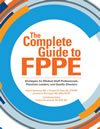3/21/2018· Automotive - Vehicular
A Paradigm Shift in Motorcoach Accessibility, Part 1: The MCI D45 CRT LE Commuter Coach
By: Ned Einstein
As an urban planner by background, there are certain clichés I have grown to loath. Among my least favorite is the phrase 'paradigm shift.' This is because few things in the transportation field ever comprise a paradigm shift. Among the true exceptions were the 45-foot-long coach, the proliferation of double-deckers, Megabus pricing, and the advances in super-clean diesel engines. Autonomous coaches seem decades away (even while exploding on the scene in Europe). Otherwise, nothing else close to a paradigm shift in this traditional industry comes to mind.












